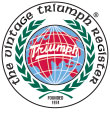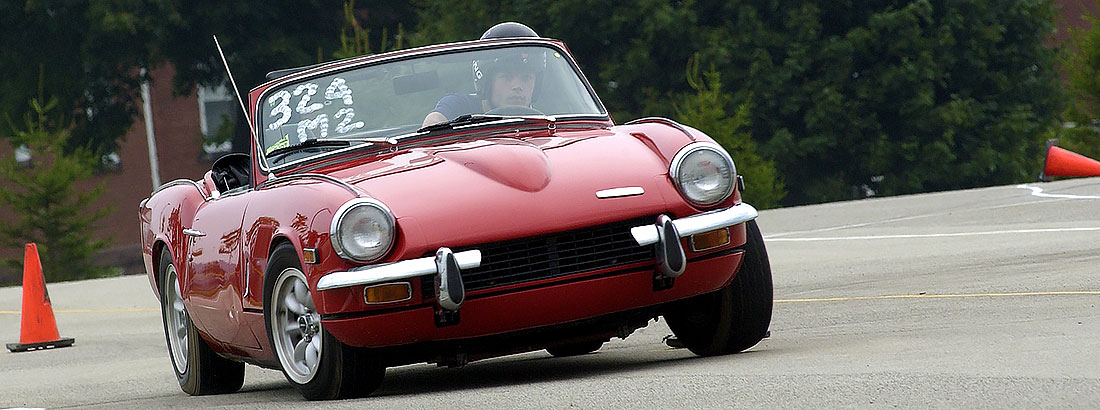
Spitfire
(1962-1980)
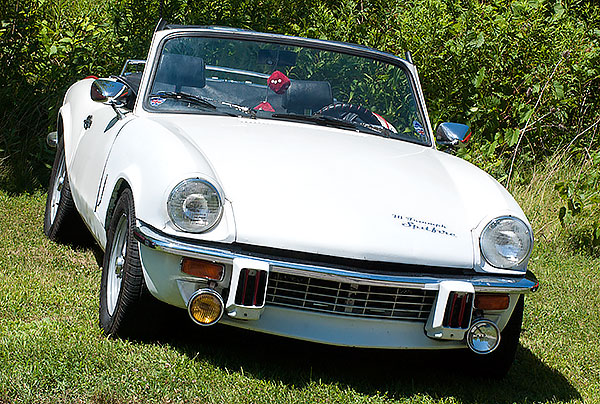
An Instant Hit
Triumph produced the fun and affordable Spitfire for 18 years, during which time over 314,000 were built. Launched in October 1962, the Spitfire featured sleek styling by famed Italian designer Giovanni Michelotti. The car was an instant hit.
A 1970 design “facelift” by Michelotti freshened the car’s look for the new decade, and accompanying chassis and suspension tweaks improved handling. A larger 1500cc engine followed shortly thereafter.
Spitfire production ended in August 1980 as the car fell victim to short-sighted management at British Leyland, U.S. safety and emissions regulations, and an unfavorable dollar/pound exchange rate.
A History of the Spitfire
Collected from Various Sources
1962-1964, “Spitfire 4”
- 4.11:1 axle ratio
- Chassis Numbers FC1 – FC44656
1965-1966, “Spitfire 4 Mk2”
- Emblem on rear deck lid, built top, 4-branch exhst mnfld
- Chassis Numbers FC50001 – FC88904
1967-1970, “Spitfire Mk3”
- Lift & Clamp top, front bumper splits grill, 1296 cc
- Single Stromberg Carb starting in 1970
- Chassis Numbers FD1 to FD15306
- FD20000 to FD51967
- FD75000 to FD92803
1971-1972, “Spitfire Mk.IV”
- “Swing Spring” began, larger front sway bar
- Chassis Numbers FH3 to FH64995
1973-1974, “Spitfire 1500”
- Axle length increased for greater stability
- Chassis Numbers FM1-up
1975-1980, “Spitfire 1500”
- Chassis Numbers FM28001 – up
Sponsored by the Texas Triumph Register , a VTR Chapter
Triumph produced the fun and affordable Spitfire for 18 years, during which time over 314,000 were built. Launched in October 1962, the Spitfire featured sleek styling by famed Italian designer Giovanni Michelotti. As the ad at left says, “…nothing looks like the Spitfire…” The car was an instant hit.
A 1970 design “facelift” by Michelotti freshened the car’s look for the new decade, and accompanying chassis and suspension tweaks improved handling. A larger 1500cc engine followed shortly thereafter.
Spitfire production ended in August 1980 as the car fell victim to short-sighted management at British Leyland, U.S. safety and emissions regulations, and an unfavorable dollar/ pound exchange rate.
During the Spitfire’s 18-year history, Triumph promoted the little roadster’s virtues in the consumer press with colorful ads aimed primarily at youthful buyers. A few of those ads are reproduced here. This is our tribute to the Spitfire – 35 years young in 1997.
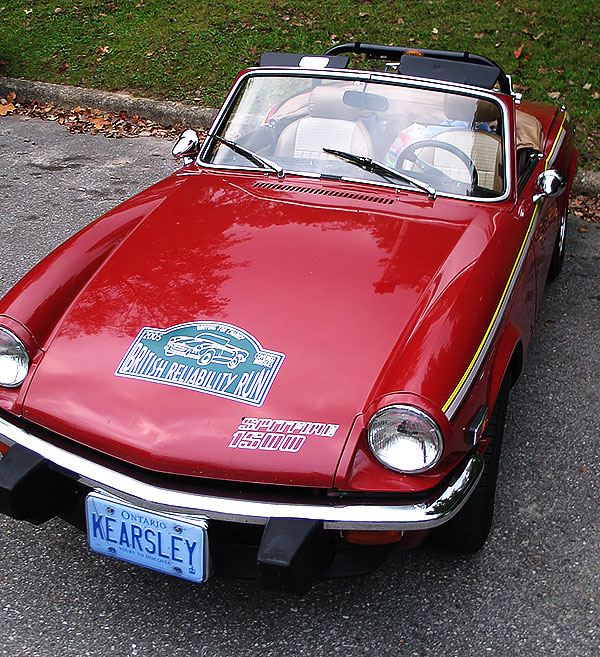
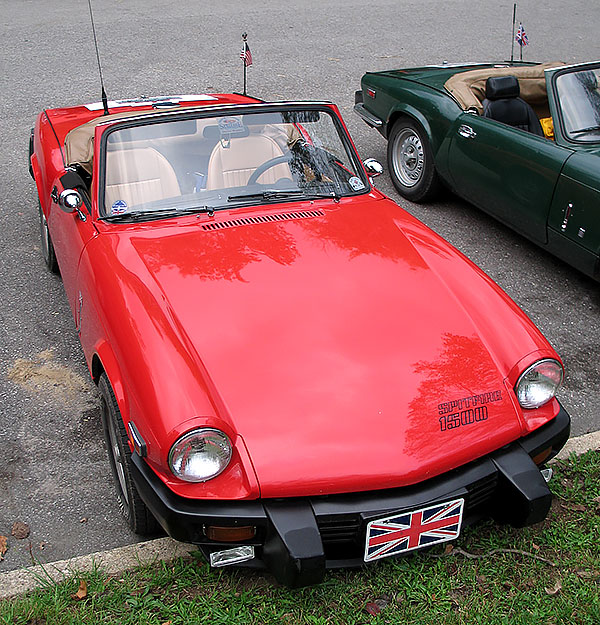
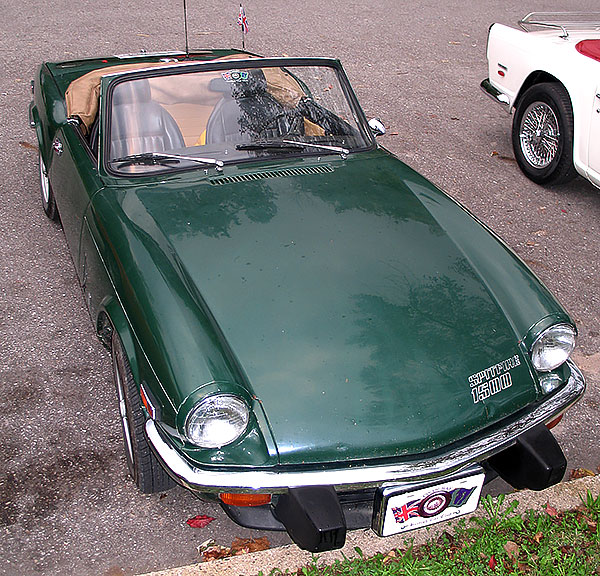
Member Pages
Scott Davis | (Illinois)
Eric A.J. Nooter | (Amsterdam, Noord-Holland)
Mike Japp | (Pensacola, FL)
Eric Kieboom | (The Netherlands)
Fred Olson | (Minneapolis, MN)
Paul Tegler | (Millersville, MD)
Dave West | (San Jose, CA)
If you would like your page added to this listing, please contact the webmaster.
Production Dates and Numbers
1969 Spitfire:
- 1969 was the first year of the “Federal” (speedo and tach in front of driver as in Mk.IV Spitfires) dashboard in the U.S.
1970 Spitfire:
- no letters T R I U M P H across bonnet or boot lid; bonnet will have a badge with the word SPITFIRE over the RAF bullseye emblem (a one-year badge), and boot will have a horizontal badge also with the word SPITFIRE (and another with MK.3 I think — it’s been a while)
- There should be at least holes for the proprietary LUCAS side marker lamp/reflector combination
- There should be a steering column lock/iginition switch much like later Mk.IV-on Spitfires
- on the right(?) rear inner quarter panel (visible inside trunk) there would be a squarish cutout that originally would have been filled with some sort of cannister for the fuel evaporative emissions setup.
- MOST 1970s would have come with the single Stromberg-equipped 1296cc engine
- 4.5 in. solid disks (same look as earlier Mk.3 wheels but 1 in. wider; same wheels as GT6+, 2000, later Vitesse, Herald courier van, etc.)
- Also, Commission and body numbers from 75001- .
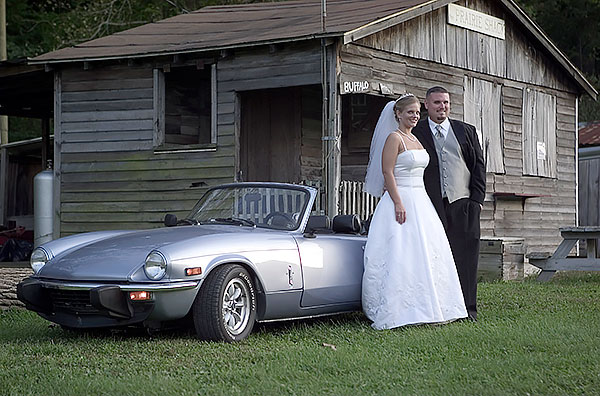
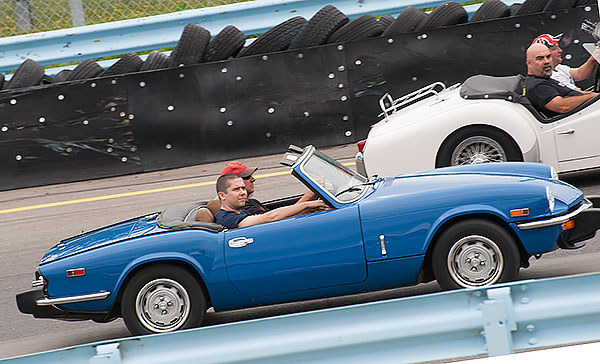
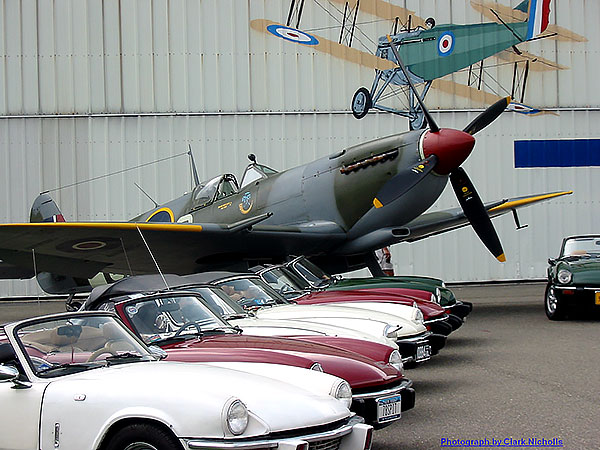
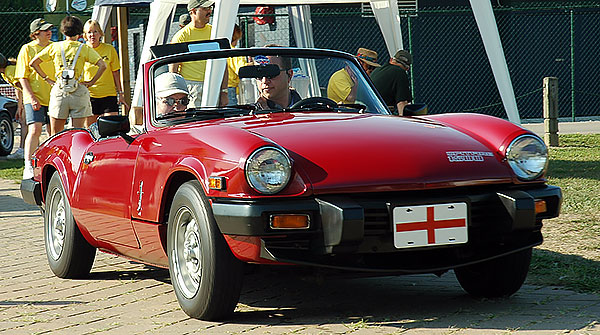
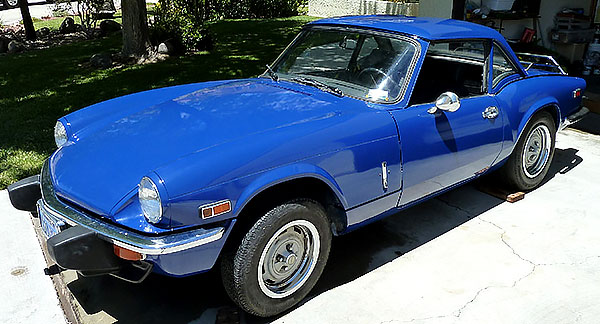
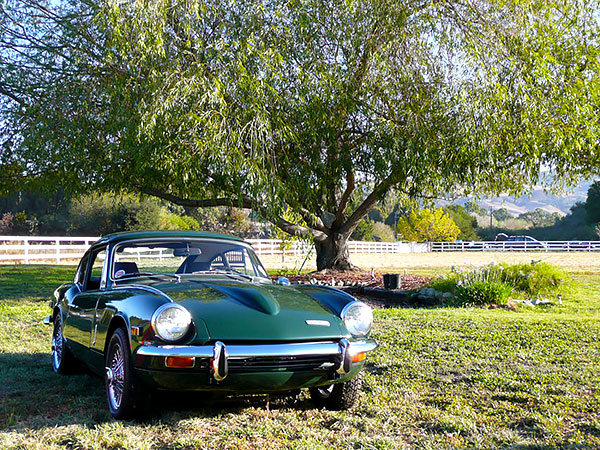
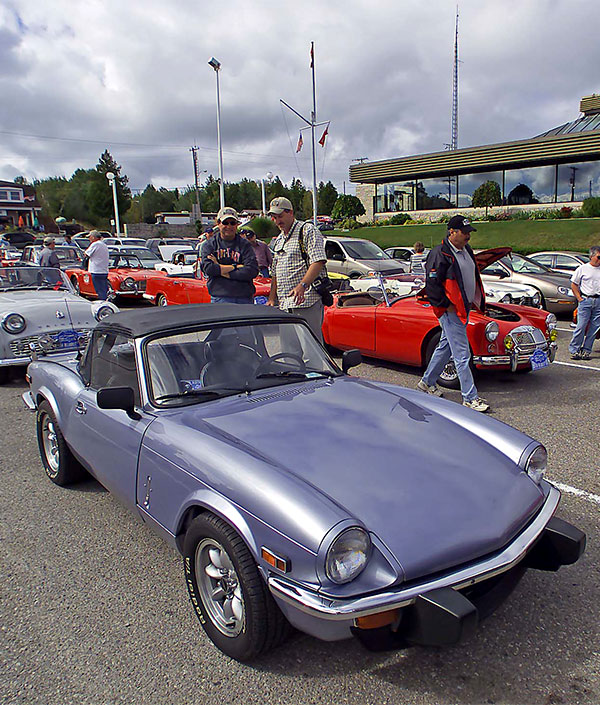
Spitfire Buyer’s Guide
In addition to the items listed in the general Triumph Buyers Guide , there are a number of specific items of interest on the Spitfire.
Parts availability for the Spitfire is excellent, with a number of major suppliers providing most parts for the Spitfire, ranging from tune up components and interior kits to most body panels.
There are two stages in checking the quality of a potential Spitfire purchase. Make a list of all the areas you intend to inspect and stick to the list.
- Body: One of the most important things to watch for on the Spitfire, as with all Triumphs, is rust. Rust coming through the paint generally indicates that there is 5 to 10 times more rust lurking beneath the body panels. Where does one look for rust on a Spitfire, other then everywhere? Look for areas that have been repainted, especially over possible rust. Is the car the original color? Look closely for body filler and lumps around the fenders and trunk. (If appropriate, lightly run your hand across the finish to feel for small bumps or dents). Be sure to pay particular attention to the following areas:
- Under the carpets at the front of footwells, underneath the driver’s pedals, and along the seat rails.
- Under the bonnet, particularly behind the rear wheels, and at the hinge mounting points where the bonnet is attached to the frame.
- In the engine compartment around the battery box, and under the hydraulic master cylinders, where leaking fluids may have removed paint, allowing rust to spread.
- Also check the chrome for the the quality of the finish, dents or missing parts. Front windscreen should be free from scratches. Convertible top should fit, back windows clear, studs secure, and stitching firm.
While standing about 10 feet away, check each side of the car for the alignment of the doors. Poor door alignment could indicate a bad frame or rusted rocker panels. Check the front and back for “lean” or suspension/chassis defects. Try bouncing the corners to check the shocks.
- Interior: Open and close each door for fit. Look for rust and check color. Check the rocker panels for rust/repair. Examine door panels and raise/lower windows. Test locks. Upholstery on seats should be free from cracks. Check under seats for disintigrating seat foams. Slide seats forward and back. Check the carpet for wear. Sneak a peek under the front carpet for floorboard rust, replacement for damage. Cracked dash? Look for the original steering wheel, ash tray, map light, glove box compartment(s). Seatbelts should be attached and not excessively worn. Spare tire and jack?
- Electrical: There are no particularly unusual electrical problems on the Spitfire, other than the typical problems common to nearly all British cars. Check all lights and plastic parts for damage. Be sure to test headlights (bright/dim), turn signals, backup, and brake lights.
- Body fit: Open the bonnet latches and check fit, dents, or twisting. Look for rust inside around lights and wheel arches. Check A-post for corrosion around attachment to door sill. Open boot and check hinges and edges for rust. Check doors again for proper fit. Look for corrosion in footwells and examine inner sills to floor pan. Check under rear wheel arches.
- Mechanical: Check fluids and belts. Start engine and check hand brake, brake and clutch pedals. Listen and look for exhaust problems. Engine should be appropriately clean. Look for oil/water leaks and mystery parts. Listen for knocking, grinding, banging, rattling, or loud ticking.
- Test Drive: Try the gears while parked. Move in reverse first. The car should not “jump” out of gear (gearbox). Now try first gear and continue through each gear, checking for smooth opperation. Tire wear can cause the car to pull to one side. Brakes can also pull. Uphill climbing should be without labor. Listen for bearing noise. Check for vibration in the steering wheel.
The prices given below are determined by the author’s experience, and are not necessarily indicative of prices in your area.
| CONDITION ———————————— Restored – 100% as new, 95 points min concourse Excellent – mostly restored or superb original Amateur partly restored, or very good original Good, complete, runs and drives well Fair, drivable, needs minor repairs, but complete Poor, not too incomplete, not badly rusted/damaged Poor, rough, incomplete, damaged, or badly rusted |
Price —— $6,000 $4,500 $3,000 $2,000 $1,200 $600 $300 |
Remember, these are values based on a normal (non duress) situation. If you are trying to sell a Spitfire (or any collector car for that matter) in a hurry (i.e. divorce settlements, need immediate cash to close on the new house, etc.) then prices can be lower, especially in winter months in the northern states. Price valuations from appraiser’s are usually given to estimate the cost of replacement.
by Bob Sykes, s1500@worldnet.att.net
Wondering what carburetors can be fitted to a Spitfire? The four
most often used are:
- Zenith Stromberg CD 150
- SU HS4 (as a pair)
- Weber DGAV
- Weber DCOE
There are many variations of each type of carb produced.
Zenith Stromberg CD150

The Zenith Stromberg CD150 series fitted as stock to later North
American market Spitfires. Not the best “performance”
choice. Many of the subassemblies are not adjustable or
rebuildable. Lots of attached hoses and fittings. Early ZS carbs were
manual choke. Later ones used a water heated auto-choke. Also shown
here is the giant air filter / thermostatic air control
contrivance.
SU HS4 (as a pair)

The twin SU HS series fitted to UK home market cars are my
favourite. Elegant in their simplicity, they are easily rebuilt and
tuned. Shown are the “stubby dashpot” HS4s. They have
been converted to non-waxstat jets. K&N chrome air filters make
a nice finishing touch.
Weber DGAV

For added performance and reliability, the Weber DGAV is a good
choice. Being a down-flow carb, it adds a ‘merican (two-barrel
progressive) touch to your LBC. Set it and forget it, virtually
maintenance free.
Weber DCOE

For WOT power and performance, the Weber DCOE. Single 45 model
shown here, but duals can be fitted permitting each cylinder to be
tuned individually. Can be tuned for a wide range of operating
parameters but tuning requires parts (jets, chokes, emulsion tubes
etc). This can get expensive. To realize to full power potential of
this carb, it should be fitted in conjunction with other engine
mods. (free flow exhaust, up-rated cam grind etc.)
